
Archips podana, the large fruit-tree tortrix, is a moth of the family Tortricidae. The species was first described by Giovanni Antonio Scopoli in his 1763 Entomologia Carniolica. It is found in Europe, Asia from Anatolia to Japan and is an introduced species in North America.

The Viper's Bugloss(Hadena irregularis) is a species of moth of the family Noctuidae. It is found in Europe.

Lichenaula tuberculata is a moth of the family Xyloryctidae. It is endemic to Australia, more specifically the Australian Capital Territory and New South Wales.
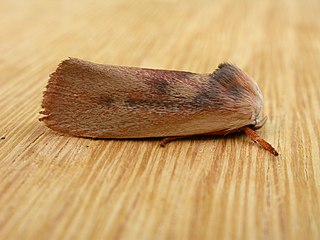
Cryptophasa rubescens is a moth of the family Xyloryctidae. It is found in Australia, where it has been recorded from New South Wales, Queensland and Victoria.
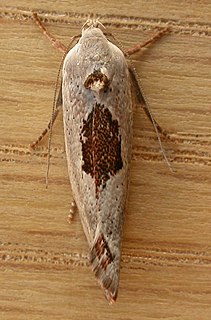
Tymbophora is a monotypic genus of moth in the family Xyloryctidae. Its sole species is Tymbophora peltastis, which is found in most of Australia.
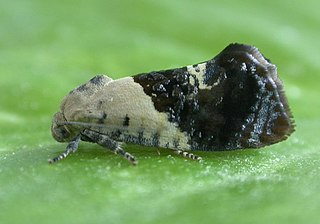
Hypertropha chlaenota is a species of moth of the family Depressariidae first described by Edward Meyrick in 1887. It is found in Australia, where it has been recorded from Victoria, Queensland, New South Wales, the Australian Capital Territory and South Australia.
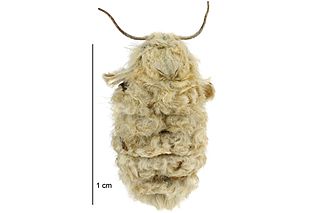
Metacrias erichrysa is a species of moth of the family Erebidae. It is endemic to New Zealand. This species can be found in the lower half of the North Island and western alpine areas of the South Island. The adult female of the species is flightless and buff coloured whereas the male is brightly coloured and a rapid flier during daylight hours. The male of the species is on the wing from mid-November to early January. The species inhabits open herb and tussock fields in mountainous terrain at altitudes of between 900 and 1200 m. Larvae feed on Brachyglottis bellidioides,Festuca novae-zealandiae and indigenous species from the genera Acaena, Muehlenbeckia, Wahlenbergia and Raoulia.

Agonopterix assimilella is a moth of the family Depressariidae. It is found in most of Europe.

Gynnidomorpha alismana, the water plantain conch, is a moth of the family Tortricidae. It was described by Ragonot in 1883. It is found in most of Europe, except Spain, Switzerland, most of the Balkan Peninsula and Ukraine. Further east it is found across the Palearctic to China and Korea. It is found in riverine and other watery habitats.
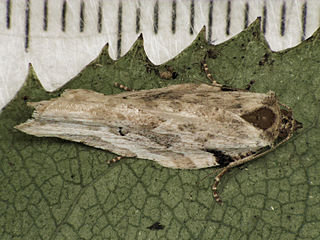
Epalxiphora axenana, the brindled bell moth, is a species of moth of the family Tortricidae. It is endemic to New Zealand, where it has been recorded from the North Island only.

Trachycentra chlorogramma is a moth of the family Tineidae. It is found on the Cook Islands, Fiji, Papua New Guinea, the Solomon Islands and Tonga.
Catoryctis eugramma is a moth in the family Xyloryctidae. It was described by Edward Meyrick in 1890. It is found in Australia, where it has been recorded from New South Wales and Queensland.
Catoryctis subparallela is a moth in the family Xyloryctidae. It was described by Francis Walker in 1864. It is found in Australia, where it has been recorded from New South Wales, Queensland and South Australia.
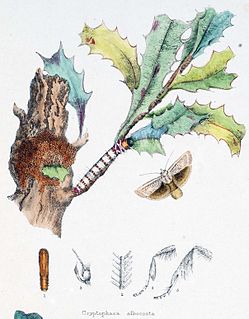
Cryptophasa albacosta, the small fruit tree borer, is a moth in the family Xyloryctidae. It was described by John Lewin in 1805. It is found in Australia, where it has been recorded from New South Wales, Queensland, South Australia, Tasmania and Victoria.
Echiomima mythica is a moth in the family Xyloryctidae. It was described by Edward Meyrick in 1890. It is found in Australia, where it has been recorded from New South Wales and Queensland.
Pilostibes stigmatias is a moth in the family Xyloryctidae. It was described by Edward Meyrick in 1890. It is found in Australia, where it has been recorded from New South Wales and Queensland.
Lichenaula undulatella is a moth in the family Xyloryctidae. It was described by Francis Walker in 1864. It is found in Australia, where it has been recorded from New South Wales, Queensland and Western Australia.
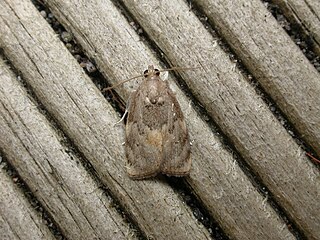
Imma acosma is a moth in the family Immidae. It was described by Alfred Jefferis Turner in 1900. It is found in Australia, where it has been recorded from Queensland and New South Wales.

Epinotia abbreviana is a moth of the family Tortricidae. It is found in Europe and was first described by Johan Christian Fabricius in 1794.

Proteodes carnifex is a species of moth in the family Depressariidae. It is endemic to New Zealand. Both the larvae and the adults of this species are variable in appearance. However the adults are normally easily identified as the outline is characteristic and the size is consistent. In appearance, adult moths mimic the leaves of their larval host plants. This species has been found near Wellington in the North Island, the tableland of Mount Arthur, in the Canterbury region, Arthur's Pass and at Lake Wakatipu in the South Island. The larval hosts of this species are southern beech trees particularly Nothofagus solandri var. solandari and Nothofagus solandri var. cliffortioides but larvae have also been found on Nothofagus fusca, Nothofagus truncata and Nothofagus menziesii. The female moth deposits her eggs individually on the underside of native beech tree leaves. Once hatched the larvae feed on those leaves through winter and spring and then pupate in January. The adult moth emerges from the pupa after fourteen days and is on the wing from January until April. They are day flying moths and are not attracted to light. Various insects parasitise the larvae of this moth including several species of wasp as well as flies including the endemic fly, Pales funesta.














